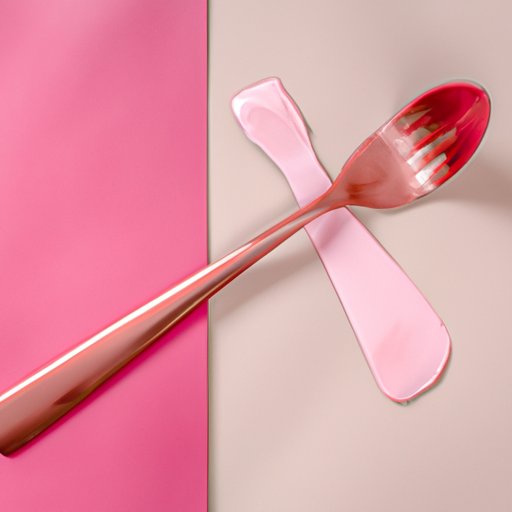
Introduction
Pink is a versatile color that conveys femininity, romance, and playfulness. However, it can be challenging to achieve the perfect shade for your needs. Mixing different colors to obtain pink can be a confusing process, leaving many feeling lost when trying to achieve a specific hue. But fear not, as this guide will provide you with the tips and tricks needed to make and utilize pink in diverse ways.
5 Simple Ways to Make Pink: A DIY Guide for Beginners
When you think of pink, the color red mixed with white may come to mind. However, this is not the only way to create this vibrant color. Mixing other colors, such as blue and red, can also result in different tones of pink.
Follow these simple steps to obtain your desired pink shade:
- Start with your primary color, red. Add a small amount of white to achieve a light pink hue. For a darker pink, add red coloring to a small amount of white paint or dye.
- Add a touch of blue to the mix if you want a cooler tone to create the perfect shade of fuchsia or baby pink.
- If you are trying to achieve pastel shades, use a small amount of yellow in your mixture to achieve a coral or peachy pink hue.
- For a muted rose color, start by mixing red with a brown pigment and slowly add white until you achieve your desired tone.
- Test small amounts of color first before mixing large amounts to reach your desired shade successfully.
From Fuchsia to Blush: The Different Types of Pink and How to Create Them
Pink is not just one typical hue but comes in multiple different shades. Each pink hue has its own unique history and personality.
Here are some popular pink shades and how to mix them:
- Fuchsia: Fuchsia is a dark pink with hints of blue or purple. To create this hue, mix magenta or red and purple in equal parts for a more electric hue.
- Blush: A pale pink shade with a soft, warm-toned hue. It can be hard to get the correct skin-tone blended look, but adding coral, a small amount of yellow, and a small amount of black to white gives a warm, rosy-tan hue.
- Carnation: A subtle, soft pink with a delicate feel can be obtained by mixing white with a small amount of pink or orange.
The Psychology of Pink: Why It’s a Popular Choice and How to Incorporate It Into Your Life
Pink has a rich cultural significance, symbolizing love, happiness, and positivity. Many people adopt pink into their lives through their fashion choices, everyday decor, or even by painting their homes.
Here are some tips for incorporating pink into your daily life:
- If you are afraid of the color appearing overwhelming, start by incorporating pink into a space with neutral decor, such as beige or gray. Pink pillows, throws, or curtains can add a pop of color to your living space.
- If you are a fashion lover, try incorporating a pink scarf or adding pink accents to your outfit, such as jewelry or shoes.
- For a more experimental approach, incorporate pink as a statement color in your house. Paint a pink accent wall or use pink tiles as a backsplash in your kitchen—it will become a distinct and memorable piece in your home.
Cooking With Pink: Adding Some Color to Your Kitchen Creations
Pink hues also lend themselves well in the culinary world, adding an attractive pop of color to dishes. You can either use natural ingredients to give your creations a pink tint or use food coloring to achieve the desired hue.
- Adding beetroot to a dish can give a delightful pink tone to savory, as well as sweet, dishes such as pink hummus or colorful pink cupcakes.
- If you prefer using food dye, slowly add it to your dish until you achieve the desired color. For best results, start with a small amount and gradually increase until you reach the desired hue.
Pink’s Perfect Pairings: Colors That Compliment the Hue
Pairing pink with the right color can be confusing. It is all about finding the right balance in your outfits or decor.
- Pink and green or grassy colors balance well, creating the perfect blend of fun and chic. Consider pairing a light pink blouse with olive green trousers for a breezy and comfortable look.
- Pink pairs well with earthy, natural colors to create a more rustic and dreamy atmosphere. Consider adding a pink throw to your brown, leather sofa for a cozy and rustic feel.
- For an elegant and delicate look, pair pink with lighter, subdued colors such as white, beige, or grey. A pastel pink hijab paired with an ivory color dress creates a beautiful contrast.
Going Green: Eco-Friendly Ways to Create the Perfect Pink Shade
Using natural dyes is an eco-friendly alternative to frequently used chemical dyes. Here are some ingredients you can use to create the perfect pink tone:
- Avocado pits and skins can create a subtle pink hue. When they boil for an hour, the pits release tannins that add a light pink tone to your fabric.
- Flowers, such as roses and hibiscus, can be boiled down to create a beautiful pink dye for your cloth.
- You can also use cherry juice, beet juice, and raspberries to create a liquid infusion that adds a lovely pink tint.
Conclusion
This guide has provided you with multiple tips and techniques to create the perfect pink shade for your needs. Feel free to experiment and find the perfect shade that suits your taste.
From incorporating pink in your decor, fashion, to culinary creations, this guide provides you with the tools to utilize this vibrant color in your daily life.
Dive into the world of pinks, and find the shade that portrays your personality, style, and vision.





